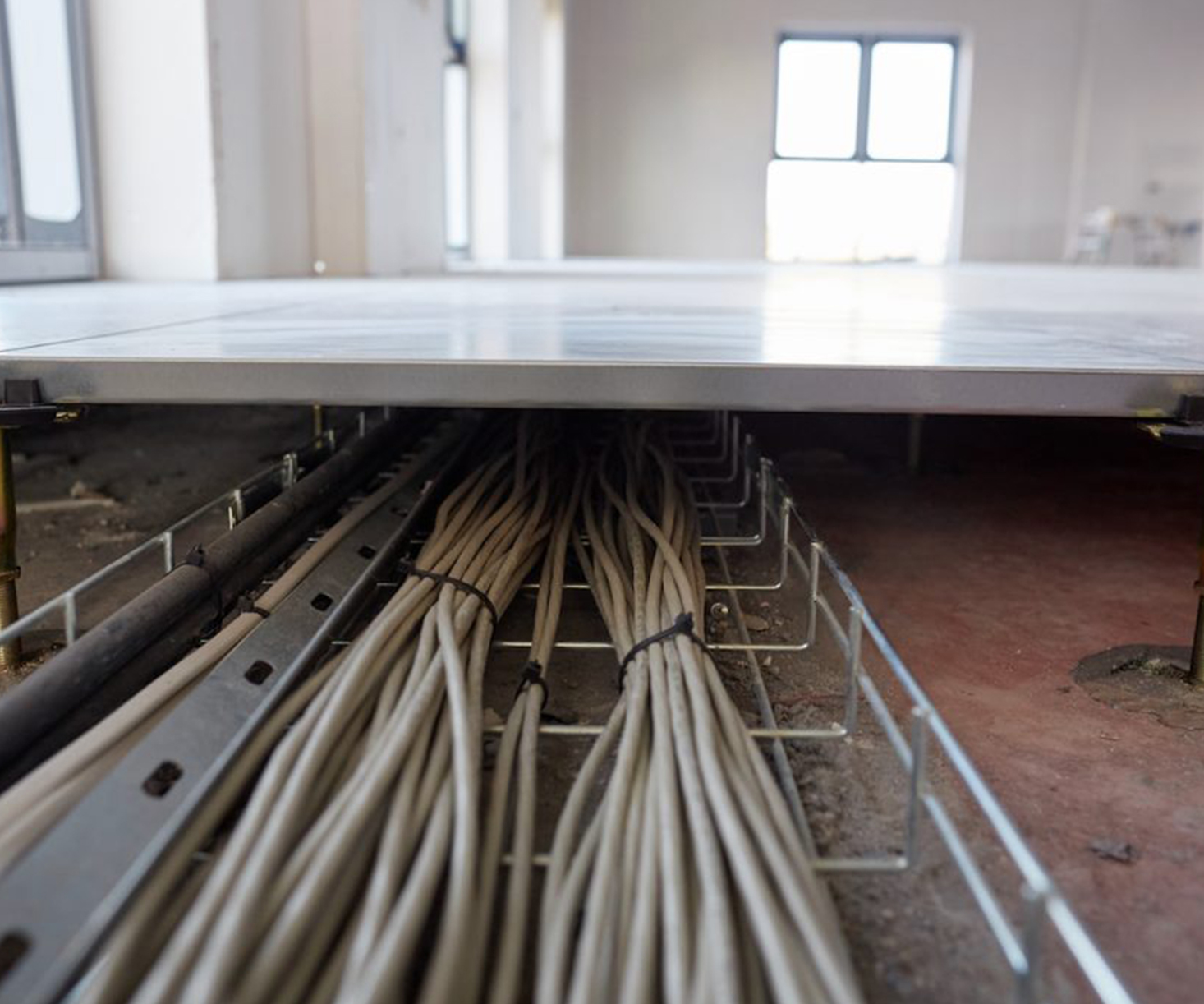The most common usage for access floors is to run cables, electrical wiring and HVAC ducts. Running cables and electrical wiring through the accessible space between the panels and the sub-floor allows easy access and flexibility; wiring can be rerouted, repaired and upgraded without construction and minimal interference to the business’ everyday activity. When combined with modular electrical systems and modular walls, the entire building can be reconfigured in a fraction of the time it would traditionally take.
Heating and cooling a building with a raised flooring system is also more efficient. The empty space between the panels and the sub-floor acts as a plenum chamber to dispense conditioned air evenly throughout the building.
Additionally, since warm air rises, heating the building from the access floor gap during the winter is more effective and efficient.
Raised floors are particularly useful for data centers and telecommunication facilities. Computer systems can rest on perforated tiles so that conditioned air is accessible for each unit. The equipment can then be designed to draw the cool air from below. With the increased efficiency and accessibility, access floors are an ideal alternative to suspended ceilings.


